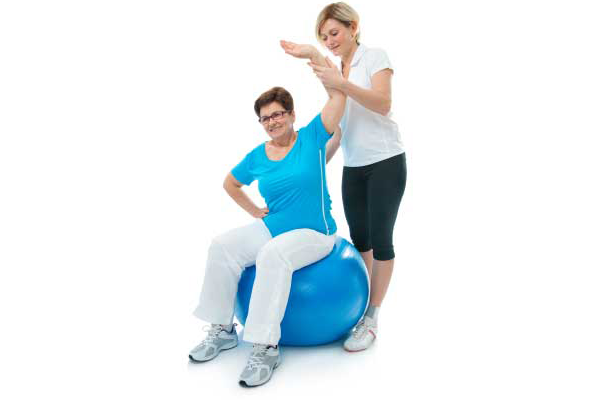Cardiovascular disease is the leading reason behind so many cases of death in America. As much as to 60% of the American population is believed to have some type of cardiovascular condition. The medical practitioners are aggressively tackling the issue of coronary disease here within mid-Michigan.
There are numerous types of coronary disease – many are congenital (people are generally born with heart problems) while most heart diseases develop over the course of time in addition to affecting people later in life.
Heart in addition to blood boat diseases are often referred to as “silent killers” since they usually develop after a while and can go unseen. Many cardiovascular illnesses develop in the event the arteries, which supply blood to the heart, gradually clogged due to excess fat and cholesterol (plaque). In the event the inner partitions of veins become narrow from a buildup involving plaque, blood clots form, and only allows smaller amount blood to can get through it. This condition is referred to as atherosclerosis, or hardening of the arteries. Insufficient blood flow to the heart could cause a heart attack, while lack of blood flow towards the brain can lead to a cerebrovascular attack.
Coronary artery disease
Blockage in the coronary arteries is called coronary artery disease—a condition in which the heart muscles do not get enough oxygen. The many serious influence of coronary artery condition is quick death without warning—something that always happens in people that have had heart problems or various heart ailments.
Types of coronary artery disease
Ischemia
A variety of coronary artery disease in which the blood flow towards the heart muscle is lessened, but produces hardly any pain or even symptoms. Discomfort is experienced, it is usually during the workout.
Angina pectoris
Pain or even pressure in the chest, back, arm or jaw, indicates that the heart muscle isn’t obtaining enough oxygen. Angina might be caused by a narrowing of the arteries or even muscle spasms inside the coronary veins. These spasms might be induced by cigarettes, cold temperature ranges, strong sensations, and other different sources. It is important to note that angina isn’t a heart ailment and doesn’t usually result in permanent heart damage, though it causes acne. The ache of angina may be relieved both by improving the oxygen supply to the heart or even by minimizing the heart’s need for oxygen.
Angina
Angina causes discomfort or even pain which is an indication that your heart isn’t getting plenty of oxygen in addition to nutrients. The causes of angina usually are atherosclerosis or even coronary artery spasm. Angina varies from people to people. While the person is affected with this condition the heart will be working more than usual, such as following a meal or even during bodily or mental stress, it can also occur when resting. Ordinarily, angina takes place primarily in the chest and moves down the left arm. On the other hand, it may be case discomfort that gets in the chest, along the shoulders, in the upper back, arms (both left and right), neck, throat, or even jaw.
Signs or symptoms of angina
- Aching, numbness or even tingling
- Intense Pain
- Cramping
- Discomfort in breathing
- Sweating profusely and dizziness
- Heaviness in heart or chest
- Tightness in the chest
If you see any symptoms
• Quit your exercise, sit or lie down, and loosen up your body.
• Create a nitroglycerin (NT6) supplement or utilize NTG spray as prescribed by your physician.
• Visit your doctor if these symptoms increase in rate of recurrence or intensity.
If angina lasts longer than a quarter-hour or worsens, call an ambulance or get to a hospital immediately. DO NOT drive by yourself in such a condition.
Heart Invasion (Myocardial Infarction)
When blood circulation to a section of the heart will be blocked and section of the heart muscle is damaged or dies consequently. If the blockage is for a short period of time and the heart eventually receives plenty of blood, oxygen, and nutrition, the damage is frequently reversible. For this reason it is particularly important to the person affected by this heart condition to get medical assistance immediately.
Indicators of any heart condition include
- Heavy feeling, pressure, or intense pain or even squeezing in the chest, which lasts for many minutes.
- Pain which radiates towards the shoulders, neck or arms.
- Lightheadedness or even fainting
- Extreme weakness
- Increase in the heartbeat
- Shortness in breathing
- Sweating profusely
- Nausea or vomiting
If you have any indicators for over 15 mins and believe they’re heart related, call an ambulance or let someone get you to the nearest hospital as quickly as possible.
Heart failure
Heart failure happens in the event of the heart not pumping enough blood to meet up with your body’s requirements. It won’t mean that you will be about die. It just indicates that the heart isn’t getting required blood and oxygen as it needs. Heart failure usually won’t occur suddenly, but gradually worsens in the time. Heart failure may be caused by simply:
Coronary artery disease
- Heart Disorders from Birth
- Past Heart attacks
- High Blood Pressure
- Diabetes
- Diseases concerning Heart Valves
- Cardiomyopathies (diseases which damage the heart muscles)
- Lung Disease, for example Emphysema
In case you see any symptoms of heart failure, you should visit the doctor immediately:
- Swelling in the feet, ankles, or even legs, often known as edema
- Fluid accumulation in your lungs, often known as pulmonary blockage
- Other symptoms might include wheezing, sleep apnea, cough, in addition to fatigue
Arrhythmia
Sometimes your heart’s electrical system won’t function properly. It may perhaps fasten, turn slow, abnormal, skip defeats or often the heart’s electrical signal won’t move inside the proper series. This causes the heart to beat faster or even slower as compared to normal, or even erratically. These abnormal tempos are named arrhythmias. They could cause various symptoms like dizziness, fainting, tiredness, shortness of breath in addition to chest ache or fast palpitations that includes flutters or even pounding of heart. If left neglected, arrhythmias may be life threatening. There are generally four major varieties of arrhythmias:
Bradycardia
Occurs in the event of the heart’s electrical signal being delayed or plugged, resulting in the slower as compared to a normal heartbeat. If the condition occurs not so often, then bradycardia is not a big problem. However, if the condition continues more than a long time, then the body will not likely receive an adequate blood supply, which are often very serious. Heart disease and many drugs could cause bradycardia, and a physician need to evaluate it to view if treatment is needed. Treatment can include discontinuing any medication and/or any pacemaker to be certain the heart beats at the normal rate.
Irregular or even extra heartbeats
Even absolutely healthy folks have abnormal or additional heartbeats often. In many cases, irregular or even extra beats may result in rapid heartbeats.
Ventricular tachycardia (VT)
Occurs in the event of the heart’s electrical signal begins inside the ventricles (lower chambers of the heart) and the heart beats too quickly. When your ventricles push too quickly, they cannot deliver plenty of blood towards the body. Now and again, VT can create a extremely rapid, inconsistent heartbeat (ventricular fibrillation), or even cardiac arrest. If VT lasts for simply a second or even two, it may not be noticed and may very well not result in any critical problems. On the other hand, if the condition lasts longer, it is very serious and may be evaluated by a physician.
Supraventricular tachycardia (SVT)
Occurs in the event of the heart’s electrical signal starts above your ventricles (the reduced chambers from the heart) causing the heart to beat very quickly or erratically. As a result, the heart is stretched, and the body receives inadequate blood supply. You will find three varieties of SVT; Atrial flutter, Atrial fibrillation, Paroxysmal SVT. Numerous underlying conditions may result in SVT. Prescription medication and/or electrical shock treatment (cardioversion) can restore typical heartbeat. In order to avoid recurrences, additional treatment and medication might be necessary.
Poor blood supply towards the heart, diseases of the heart valves or even chemical imbalances systems can result in VT. It often occurs during or following a heart attack. No matter, just how long it lasts, a health practitioner must assess it. Normal heartbeat may be restored with electrical jolt treatment (the paddles). Long-term cases of VT may require an incorporated defibrillator and/or medicine.
Several diagnostic tests can be done to identify arrhythmias, which include an electrocardiogram (ECG), Holter Observe, a stress test, any tilt stand test, and/or often an Electrophysiology review (EP) when necessary. Also, if an arrhythmia isn’t revealed by routine examining then an implantable loop recorder might be indicated.
Cardiovascular system defects
Impediment defects – Cardiovascular system valve troubles
An obstruction is a narrowing, which partly or even completely hindrances the flow of blood. Obstructions named sentences may appear in the heart valves, veins or veins.
Pulmonary stenosis
Aortic stenosis
Bicuspid aortic device
Subaortic stenosis
Mitral device prolapse
Peripheral arterial disease
Like the heart, all tissues of the body will need oxygen along with nutrients in order to survive in addition to working properly. Fatty plaques or even atherosclerosis also can affect arteries that supply oxygen-rich blood to other areas of the body. For instance, peripheral arterial condition (PAD) occurs in the event the flow involving oxygen-rich blood towards the legs and the feet will be blocked or even decreased. This blockage inside the vessels deprives the feet of oxygen and nutrition, and creates symptoms usually in the thigh, leg muscle and feet.
Signs or symptoms of sleeping pad
- Brown spots on the skin
- Changes in the color of the skin on the leg, sol trains from pink to blue
- Coldness
- Loss of hair on the lower part of the leg
- Numbness in addition to tingling
- Discomfort or cramps after going for walks
- Intense pain
- Swelling
- Ulcers
Drugs, catheter/surgical techniques, quitting tobacco, eating low cholesterol and fat food, losing excess body weight are strategies to reduce SLEEPING PAD.





